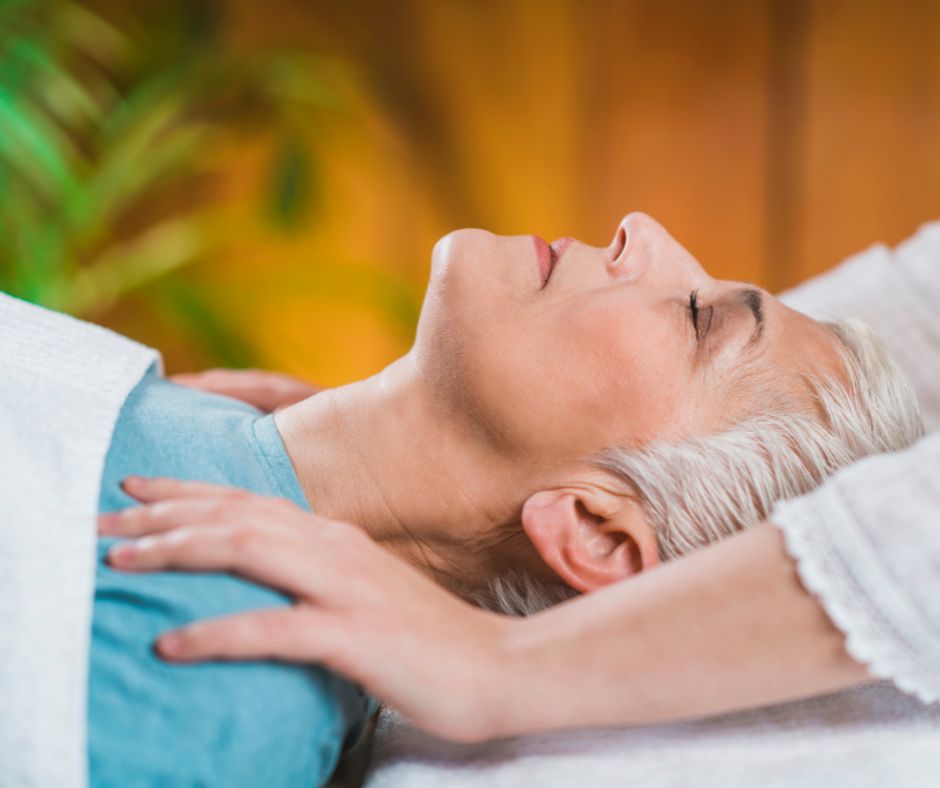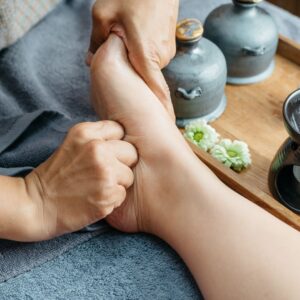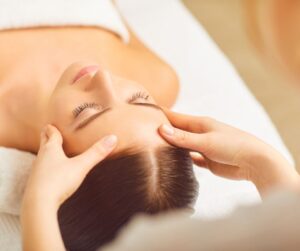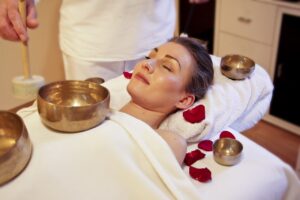If you’re interested in natural healing practices, you may have heard of marma points. These are specific points on the body that are believed to hold significant energy and are used in Ayurvedic medicine for various purposes, including healing and relaxation. In this article, we’ll dive into the world of marma points, exploring what they are, how they work, and their potential benefits.
We’ll also take a look at some techniques for stimulating marma points, including massage and acupressure. So, whether you’re curious about this ancient practice or looking to incorporate marma point therapy into your self-care routine, keep reading to learn more.
What are marma points of ayurveda?
Marma points are specific points on the body that are believed to be areas of concentrated life force energy, known as prana, in Ayurvedic medicine. These points are similar to the acupressure points in Traditional Chinese Medicine, but with some differences in their location and function.
There are a total of 107 marma points located throughout the body, with the majority of them located at the junctions where two or more types of tissue meet, such as muscles, bones, ligaments, and joints. These points are believed to be the gateways for prana to enter and leave the body.
Check out the diagram here
Check out our latest posts:
- Menopause Frizzy Hair Treatment: Effective Solutions for Smooth Hair
- Sore Nails After Acrylics Removed: What You Need to Know
- Paper Thin Nails After Acrylics: Understanding Causes and Remedies
- Mature Hairline VS Receding Hair: Understanding the Difference
- Toothpaste on Pimples Overnight: Does It Work?
Marma point therapy
Stimulating marma points is thought to help balance the flow of prana and promote healing and relaxation. Marma point therapy can be done using massage, acupressure, or even with the use of herbal remedies and essential oils. Each marma point is associated with specific physical and emotional functions, and working on certain points can have different effects on the body and mind.
Some common marma points include the third eye point, located in the center of the forehead, the heart point, located in the center of the chest, and the navel point, located at the center of the belly. By understanding and working with these marma points, Ayurvedic practitioners aim to promote overall wellness and balance in the body and mind.
Related: Effleurage Facial Massage
Marma points Locations in the body
| Marma Point | Location | Effects |
|---|---|---|
| Ajna (Third Eye) | Center of the forehead | Promotes intuition, mental clarity, and spiritual connection |
| Anahata (Heart) | Center of the chest | Promotes emotional balance and connection to others |
| Hridaya (Heart) | Left side of the chest, near the heart | Promotes heart health and emotional healing |
| Nabhi (Navel) | Center of the belly | Promotes digestion, metabolism, and emotional stability |
| Kshipra (Armpit) | Hollow area under the armpit | Promotes lymphatic drainage and immune function |
| Janu (Knee) | Behind the knee joint | Promotes joint health and flexibility |
| Greeva (Neck) | Base of the neck, near the spine | Promotes neck health and relieves tension |
| Shiro (Head) | Crown of the head | Promotes mental clarity and relaxation |
| Mana (Mind) | Center of the forehead | Promotes mental focus and concentration |
| Talahridaya (Palm) | Center of the palm | Promotes heart health and emotional balance in the hands |
It’s important to note that these marma points are just a few examples of the many points located throughout the body, and that their effects may vary depending on the individual and the specific technique used to stimulate them. Ayurvedic practitioners typically have extensive training in the use of marma points and can provide personalized recommendations for their use.
Related: Abhyanga Ayurvedic Massage; All You Need to Know
Marma points on head
| Marma Point | Location | Effects |
|---|---|---|
| Shiro | Crown of the head | Promotes mental clarity and relaxation |
| Sthapani | Center of the forehead, between eyebrows | Promotes mental clarity, spiritual connection, and intuition |
| Shmashru | Top of the head, near the hairline | Promotes relaxation and relieves tension in the scalp and face |
| Utkshepa | Back of the head, near the base of the neck | Promotes relaxation and relieves tension in the neck and shoulders |
| Adhipati | Temples | Promotes mental clarity and relieves tension in the temples |
It’s worth noting that these are just a few examples of the many marma points located on the head, and their effects may vary depending on the individual and the specific technique used to stimulate them. It’s always best to consult with a trained Ayurvedic practitioner before attempting to work with marma points on your own.
Related: Shirodhara Scalp Massage; Benefits, Cost, & Steps
Marma points on face
| Marma Point | Location | Effects |
|---|---|---|
| Adhipati | Temples | Promotes mental clarity and relieves tension in the temples |
| Sthapani | Center of the forehead, between eyebrows | Promotes mental clarity, spiritual connection, and intuition |
| Sadyojaata | Bridge of the nose | Promotes nasal health and respiratory function |
| Aajna | Center of the forehead | Promotes mental clarity, intuition, and relaxation |
| Apaanga | Cheekbones | Promotes lymphatic drainage and relieves tension in the cheeks |
| Taluhridaya | Roof of the mouth, behind the front teeth | Promotes dental health and relieves tension in the jaw and mouth muscles |
It’s worth noting that these are just a few examples of the many marma points located on the face, and their effects may vary depending on the individual and the specific technique used to stimulate them.
It’s always best to consult with a trained Ayurvedic practitioner before attempting to work with marma points on your own.
Related: Ashiatsu Barefoot Massage; All you need to know
108 marma points chart
The 108 marma points chart is a tool used in Ayurvedic medicine that lists the locations of 108 vital energy points on the body, known as “marma points”. According to Ayurveda, these marma points are junctions between the physical body and the subtle energy body, and stimulating them can help to balance and harmonize the flow of energy throughout the body.
Check it out here
The 108 marma points chart typically includes detailed information about each point, including its location, the physical and energetic functions associated with it, and the techniques used to stimulate it. These techniques may include massage, pressure, or the use of herbal oils or other substances.
In Ayurvedic medicine, working with marma points is believed to help to promote overall health and well-being, as well as to address specific health concerns such as pain, digestive issues, and emotional imbalances. However, it’s important to note that working with marma points should always be done under the guidance of a trained Ayurvedic practitioner, as improper use can cause harm or exacerbate existing health issues.
Marma points massage
It is important to note that working with marma points should only be done under the guidance of a trained Ayurvedic practitioner. However, here are some general guidelines for how marma point massage might be performed:
- Preparation: Before beginning the massage, the practitioner will typically create a calm and quiet environment, and may also use warm herbal oils or other substances to prepare the body for the massage.
- Locate the marma points: The practitioner will then locate the marma points on the body using the 108 marma points chart, and will typically focus on a specific set of points based on the individual’s needs and health concerns.
- Apply pressure: The practitioner will then use their fingers, thumbs, or other tools to apply gentle but firm pressure to the marma points, often using circular or back-and-forth motions.
- Adjust pressure: The practitioner will adjust the pressure as needed based on the individual’s feedback, and may also use other techniques such as tapping or vibration to further stimulate the points.
- Repeat: The practitioner may repeat the massage several times, focusing on different sets of marma points as needed.
- Integration: After the massage, the practitioner will typically allow the individual to rest and integrate the experience, and may offer additional guidance on self-care techniques or lifestyle changes to support overall health and well-being.
Again, it’s important to note that working with marma points should only be done under the guidance of a trained Ayurvedic practitioner, as improper use can cause harm or exacerbate existing health issues.
Related: Swedish Massage Techniques and Benefits
Conclusion
In conclusion, marma points are an important aspect of Ayurvedic medicine and are believed to be junctions between the physical body and the subtle energy body. Stimulating these points through massage, pressure, or other techniques is thought to promote overall health and well-being, as well as to address specific health concerns.
However, it is important to work with a trained Ayurvedic practitioner when working with marma points, as improper use can cause harm or exacerbate existing health issues. With proper guidance and care, however, marma point massage can be a valuable tool for promoting physical, mental, and emotional balance and harmony.





